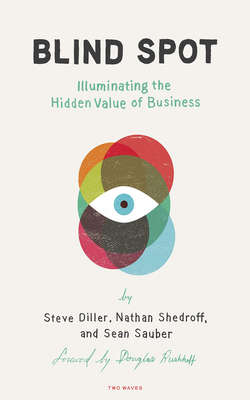Читать книгу Blind Spot - Nathan Shedroff - Страница 20
На сайте Литреса книга снята с продажи.
DIMENSIONS OF AN EXPERIENCE
ОглавлениеWhat separates an ordinary, single interaction, like receiving a bill, from a valued experience? Research has found that experiences typically work in six dimensions: value, consistency, intensity, duration, triggers, and interaction.
Value. On what levels does your experience (and relationship) provide and exchange value? Are you offering functional value for financial value? Are you engaging on a level of emotional value or triggering someone’s sense of identity? If you’re connecting with your customer’s core meanings, you’re providing the deepest value possible and customers are usually more willing to pay more, in return. Some companies are successful playing at the most surface levels while companies that reap the highest rewards operate at the deepest.
Consistency. Experiences only work over time if they seem to come from the same place. Whenever a customer interacts with your company, no matter what the touchpoint, it must feel consistent. If your advertising promises one thing but your product delivers another, you look forced or fake, just as inconsistent people seem dishonest and untrustworthy—or at least, unprofessional.
The trick, here, is that the experience should be consistent in human terms, not in absolute, engineering terms. Technically, this may make them seem inconsistent, but as long as they follow your customers’ expectations they will feel natural. For example, just because customers might expect to find one of your products in different places doesn’t pose a problem that all of your products aren’t also (consistently) in more than one place. Or just because some of your experiences are different in person than online (while others aren’t), doesn’t mean they’re wrong if it’s how customers think they should be.
Intensity. Intensity involves how much the touchpoint resonates in someone’s mind. Some interactions are so low-key that they impact a user about as much as brushing their teeth. But most valued experiences have intensity. They have the power to captivate and change you. An adult’s experience of a NASCAR race should be as exciting and dynamic as it can be. A pair of shoes can make you feel terrific, and a blender can make you happy if it makes the perfect margarita—or makes it effortlessly. But your experience needs to be reasonably intense to be valued.
Sometimes, of course, customers don’t want a particular interaction to be intense at all. Or they want to relax. Finding the proper intensity for a touchpoint is an important part of improving the experiences people will have.
Duration. Duration is just what it says: how long an interaction lasts. Obviously, you want the wait for a customer service call to be as short as possible. You’d like a spa treatment to be much longer. Managing these intervals is as important as any other part of the interaction—for example, taking the right amount of time and making the transitions in and out of the experience smooth. More important is your understanding of when the interaction actually starts. (Hint: it’s much earlier than you likely think.)
Triggers. Triggers involve how people react to different design elements within touchpoints. Every element of an interaction can evoke different responses in people. You may love bamboo because it’s a hard, environmentally responsible material, but some of your customers may think of it as a cheap artifact of the 1960s. You may like earth tones, but your customer may associate them with dirt. All of your design decisions trigger responses in people, and you have to be certain of what these are before you deploy them. You don’t get to define the reactions. The best you can hope for is to uncover and design to them.
Interaction. Interaction commonly refers to interactive media; this definition is a little shortsighted. Whenever a business creates a touchpoint, it can choose how it interacts with customers—as passive objects, or responding to their actions like a skilled concierge. More and more, people expect the latter—though not everywhere. They want intelligent products and personal interactions that anticipate their needs and treat them appropriately.
